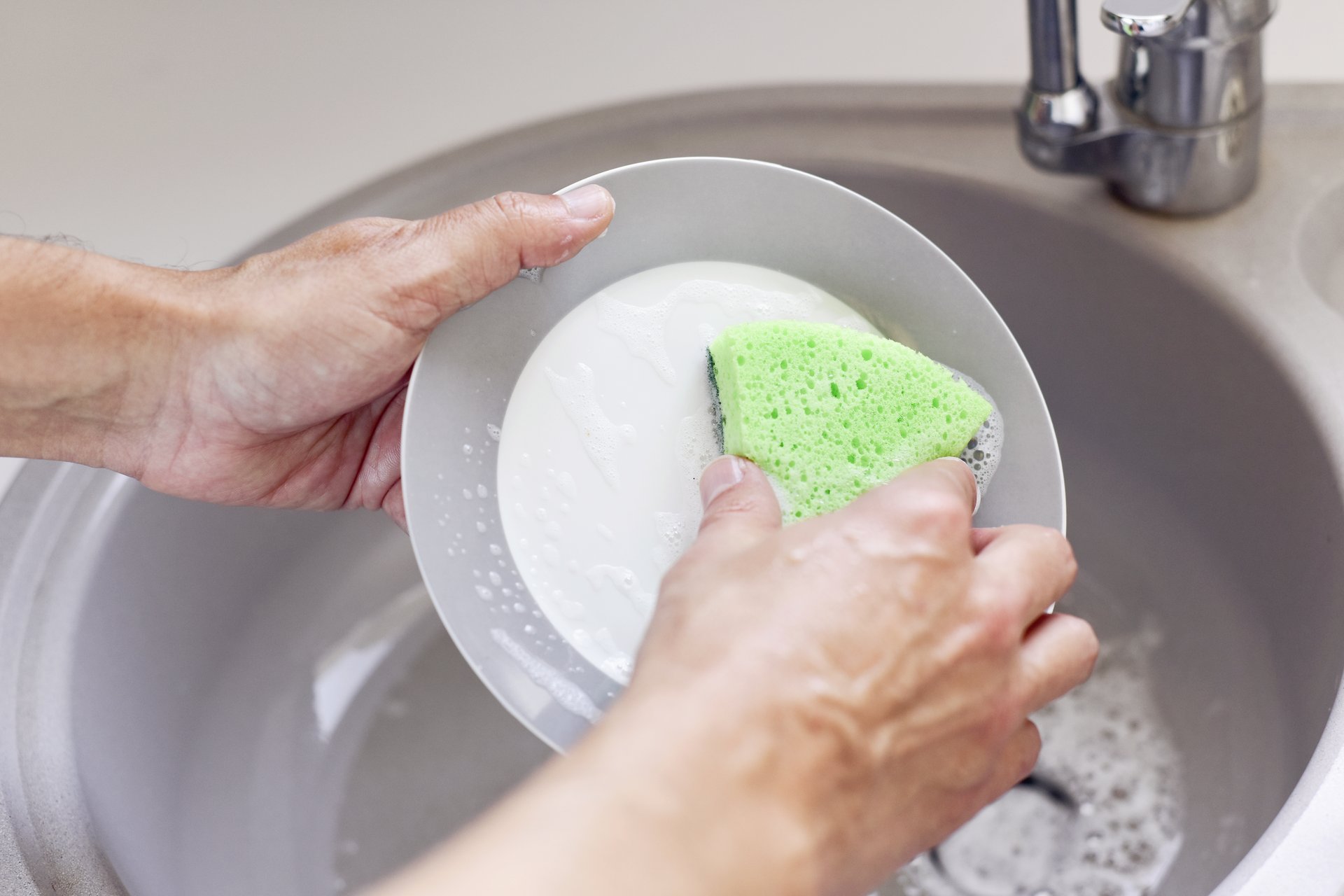
I used feel a sense of pride every time I nuked a kitchen sponge in the microwave. I thought I was killing any bacteria in the sponge, thereby outsmarting a cleaning-product industry that seemingly wants me to trash sponges after every use.
If you’re thrifty, you can probably relate. But it turns out we’re going about this all wrong. Microwaving sponges can enable the worst bacteria in them to proliferate, according to a study recently published in the journal Scientific Reports.
For the study, researchers from several German institutions analyzed 28 samples from 14 used kitchen sponges.
Amounts of bacteria in kitchen sponges
Why focus on sponges used in the kitchen? “Despite common misconception, it was demonstrated that kitchen environments host more microbes than toilets,” according to the study report.
The researchers write, “Our work demonstrated that kitchen sponges harbor a higher bacterial diversity than previously thought …”
They identified 362 different types of bacteria in the 14 sponges. The population density of bacteria was as high as 82 million bacteria per cubic inch of sponge.
Study co-author Markus Egert, a microbiologist at Germany’s Furtwangen University, says in a New York Times report:
“There are probably no other places on earth with such high bacterial densities.”
Types of bacteria in kitchen sponges
Another conclusion of the study: Regularly cleaning kitchen sponges appears “not sufficient” to reduce the number of bacteria present in sponges, “and might even increase” the percentages of certain species of bacteria.
The researchers write:
Our study stresses and visualizes the role of kitchen sponges as microbiological hot spots … with the capability to collect and spread bacteria with a probable pathogenic potential.
A bacterium scientifically known as Moraxella osloensis was one of the most common types researchers found on kitchen sponges — including the sponges of folks who regularly “clean” their sponges. It’s one of those bacteria with “pathogenic potential,” but it’s perhaps more gross than scary.
In response to some dramatic media coverage of the sponge study, the United Kingdom’s National Health Service recently published an article titled “Kitchen sponges may be a ‘bacteria hotspot’ — but no need to worry.” The article says of bacteria in the Moraxella family:
“These bacteria are often found on human skin, so it’s likely they got onto the sponges from people’s hands. Moraxella are also linked to the unpleasant smell sometimes found after laundry has taken longer to dry, so they seem to be common in the household environment.”
The researchers say as much in the study as well, noting that Moraxella osloensis is “known for generating malodor in laundry” and thus “might be responsible for bad-smelling kitchen sponges, too.”
The researchers also note they did not find bacteria like salmonella or campylobacter, which are known to cause food poisoning.
The right way to ‘clean’ kitchen sponges
Still, the researchers suggest that rather than “clean” your kitchen sponges, you should replace them weekly.
If you can’t bear to be that wasteful, Egert tells the New York Times you should clean sponges by tossing them in the washing machine on the hottest setting, using powder detergent and bleach. Then, use them “somewhere other than the kitchen that is less hygiene-sensitive, like the bathroom.”
The germs you should be most worried about spreading are probably the ones that cause foodborne illness, which are mostly likely to be found on raw foods and surfaces that come in contact with raw foods. Those are the bacteria known to kill.
For example, as we note in “7 Keys to Dodging Deadly Bacteria Lurking in Your Food,” salmonella is the bacteria that poses the biggest threat to humans. It causes an estimated 1 million illnesses in the U.S. each year, including 19,000 cases that lead to hospitalizations and 380 that end in death.
What’s your take on this latest study of sponge bacteria? Sound off below or on our Facebook page.




Add a Comment
Our Policy: We welcome relevant and respectful comments in order to foster healthy and informative discussions. All other comments may be removed. Comments with links are automatically held for moderation.